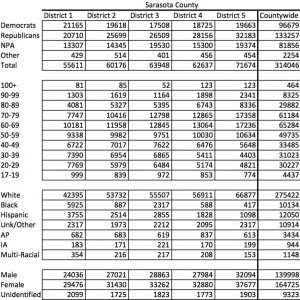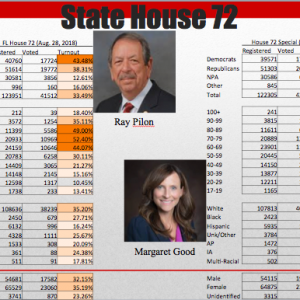The Proven Wisdom of Fiscal Neutrality
Guest Correspondence
SRQ DAILY
SATURDAY JUN 28, 2014 |
Take any outstanding city or town and it’s clear: among the most important responsibilities of local government is creating beauty, efficiency and prosperity in the built environment. Local government must set the table with smart infrastructure and planning that maximizes public investments and minimizes public liabilities. Unfortunately, our local government’s handling of the Sarasota 2050 overlay district is not focused on true community prosperity, but rather is equating community prosperity with business outcomes for a handful of landowner/developers.
The Sarasota 2050 plan is an optional plan that permits high density development in rural lands east of Sarasota’s Urban Service Boundary (or I-75), as long as certain standards are met. One of those standards is fiscal neutrality: the development must pay for its own infrastructure both initially and over the long term.
Charles Marohn, national planning thought leader and co-founder of Strong Towns, points out that prior to World War II, the development of U.S. towns and cities occurred incrementally. New infrastructure, or capital investments, had to bring a real return on investment, at least enough future tax revenue to pay for its construction and maintenance. Whether a small town or a big city, development occurred incrementally, lot by lot, and was inherently fiscally neutral due to conservative financing practices. Towns began with a Main Street, with retail shops on the bottom and offices or apartments above. Mixed uses prevailed. As the town grew, the street network expanded up and out. When development is incremental and fiscally neutral, financial risk is minimized. Barriers to entry are reduced. Entrepreneurs and start-ups can buy in, develop and get ahead. The built environment portfolio is diversified and community wealth grows. Municipal budgets balance.
Contrast this with the post-World War II growth model. Communities are planned by a handful of landowners, fully formed on big, undeveloped parcels of land, with heavy borrowing. Roads are primarily designed for a questionably enhanced driving experience, not for enhanced commerce, walking or cycling. Diversification is limited. Single uses prevail. Communities foot the bill for major capital improvements, buying into unproven assumptions that these infrastructure investments will bring a return on investment.
They don’t. A recent study of Sarasota County’s tax base by Joe Mincozzi demonstrates that a suburban multi-family housing development in Sarasota County takes 42 years to pay off its infrastructure costs. Forty two years is longer than the life of the infrastructure.
As Marohn says, no one should invest a dime before answering, “Will this project generate enough tax revenue to sustain its maintenance over multiple life cycles?” Fiscal neutrality requires the question to be asked, and the answer to be “yes”.
Fiscal neutrality forces building to be financially productive. Fiscal neutrality standards go hand in hand with encouraging infill and redevelopment, because infill and redevelopment occurs where public infrastructure investments already exist. The County Commission has done nothing to implement 2050's infill and redevelopment policy. Take a drive up and down U.S. 41 and it's evident: Sarasota County does not have an effective infill and redevelopment policy.
Development that will fail to generate enough tax revenue to cover its public services should be rejected by our local government. Rather than require Neal Communities, Schroeder Manatee Ranch and others to meet this standard, the Sarasota County Commission wants to hobble fiscal neutrality to accommodate these purveyors of outdated development patterns. If they succeed, you and I will pay. Even worse, we will lose the true economic prosperity that lies in fiscally neutral growth. It’s a shame that some organizations representing our business community fail to recognize this truth.
SRQ Daily Columnist Catherine Antunes is the president of Sarasota Citizens for Responsible Government and vice president of the Sarasota County Council of Neighborhood Associations
« View The Saturday Jun 28, 2014 SRQ Daily Edition
« Back To SRQ Daily Archive










